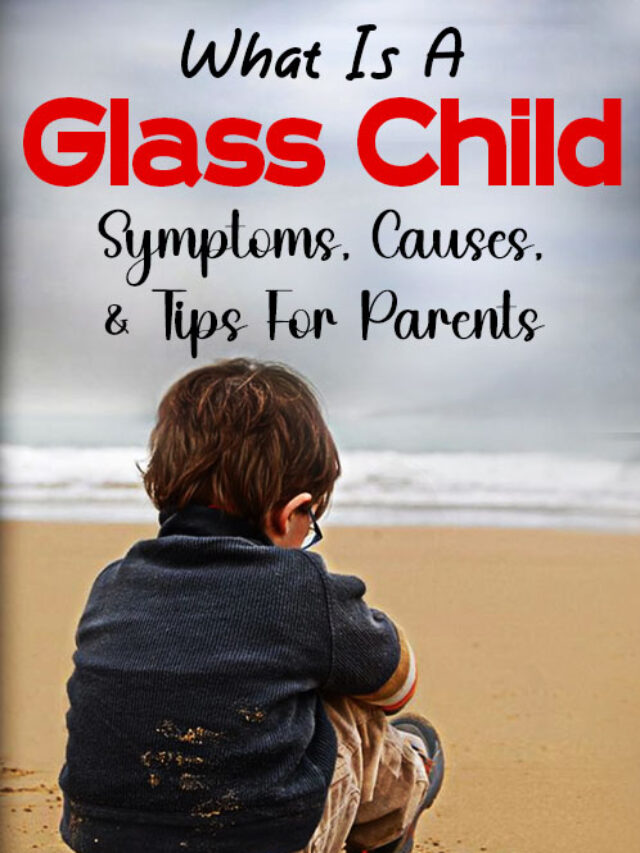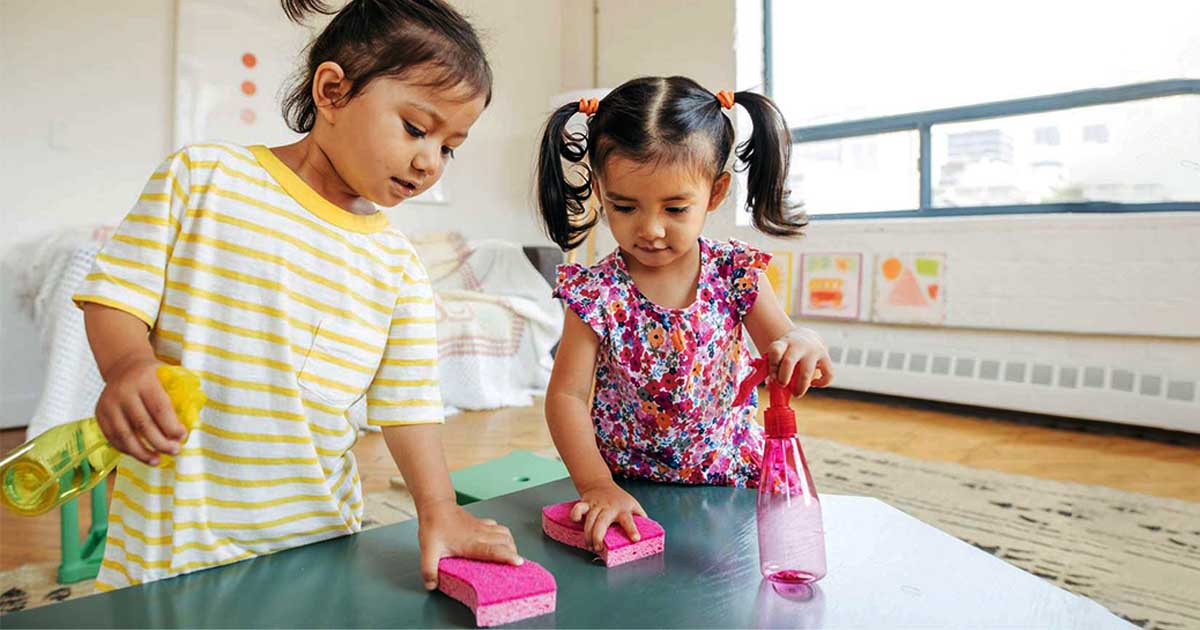Understanding how children connect with those who care for them is like discovering the secret to a magic garden where every flower blooms beautifully. This attachment in childhood development starts very early in life.
Just like plants need sunlight, water, and good soil to grow, children need love, understanding, and care from their families to develop in the best way possible.

In the early years, from the moment they are born until they become toddlers, children show us how they feel and what they need through their actions.
This article will help you understand why is attachment important for infants. We’ll also provide you with 10 ways to build attachment in childhood development.
It’s a guide for anyone who plays a part in a child’s life and wants to support their journey towards becoming emotionally healthy and socially connected individuals.
What Is Attachment Behaviour In Early Childhood
Attachment behavior in early childhood is a fundamental aspect of a child’s emotional and social development, deeply influencing their future relationships and emotional well-being.
According to Bowlby and Ainsworth’s Attachment Theory, the bond that forms between a child and their primary caregiver within the first 18 months of life is critical. This bond is characterized by instinctual behaviors such as crying and clinging.

These are initially directed towards any caregiver but become specifically targeted at primary caregivers around 7 or 8 months of age. As children progress into the toddler stage, they start to form an internal working model of their attachment relationships.
Attachment in childhood development, ranging from secure to various forms of insecure (anxious-avoidant, anxious-resistant, and disorganized), affects how children regulate their emotions, relate to others, and perceive themselves and others.
Securely attached children tend to view others as supportive and themselves as worthy of respect, displaying resilience and successful social interactions.
In contrast, children with insecure attachment styles may exhibit difficulties in emotion regulation, avoidance of closeness or exaggerated emotional reactions, and challenges in forming satisfying relationships.
Read More: 10 Effective Consequences for Kids’ Bad Behavior You Need To Use!
Why Is Attachment Important For Infants
Understanding why is attachment important for infants will help you provide the necessary tools to your children for better growth and emotional development.

The following are the reasons why is attachment important for infants:
1. The Foundation of Infant Development
Attachment in childhood development serves as the cornerstone for infants’ emotional, social, intellectual, and physical growth. It’s described as the unique emotional connection between the baby and their main caregiver, fundamentally shaping the infant’s brain structure and overall development path.
Secure attachment, characterized by a deep, non-verbal emotional exchange, ensures that infants feel protected and tranquil, prerequisites for the healthy maturation of their nervous system. This secure base fosters curiosity, self-awareness, trust, and empathy.
2. Impact on Future Relationships and Coping Mechanisms
The effects of secure attachment extend beyond early development into future relationships and coping capabilities.
Research highlights that securely attached individuals often experience more stable relationships and higher satisfaction in various aspects of life, including sexual relationships.
Interestingly, attachment styles are not static; they can evolve based on life experiences and relationships.
3. Understanding Disorganized Attachment and Disorders
Not all attachment behaviors are indicators of long-term issues. Disorganized attachment behaviors, for example, may be transient and resolve with stable caregiving.
Attachment disorders like Reactive Attachment Disorder (RAD) and Disinhibited Social Engagement Disorder (DSED) highlight severe attachment issues, necessitating a history of inadequate care for diagnosis.
These conditions underscore the complexity of attachment and the diverse factors that can affect a child’s development.
4. Building Secure Attachment
The construction of a secure attachment bond relies on the caregiver’s ability to understand and respond to the infant’s cues. This bidirectional nonverbal communication process between caregiver and infant fosters a sense of safety and understanding.
Understanding why is attachment important for infants plays a crucial role in fostering secure attachments through sensitive and responsive care. Providing a solid foundation for the child’s lifelong development and well-being.
Read More: Breaking the Generational Curse: 10 Myths of Traditional Parenting Debunked
10 Ways To Build Attachment In Childhood Development
Building a secure attachment in childhood development is crucial for fostering emotional and social well-being in children.

Here are five effective ways to nurture attachment behaviour in early childhood:
1. Accept Your Child Fully:
Attachment in childhood development is the bedrock of a secure attachment. Understanding and embracing your child’s unique traits, interests, and capabilities creates a nurturing environment that promotes their sense of security and belonging.
This unconditional acceptance communicates to your child that they are valued and loved just as they are, which is essential for their emotional and psychological development. Celebrate their uniqueness, support their interests, and be there to guide them through their challenges.
This foundational acceptance not only strengthens your bond but also builds your child’s self-esteem and confidence.
2. Teach Emotional Language:
Developing your child’s emotional intelligence is key to helping them navigate their feelings and interactions with others. Engage in daily activities that encourage the expression of emotions, using books, stories, and personal experiences as teaching moments.
By helping your child to identify, label, and express their emotions effectively, you equip them with the tools for emotional regulation and empathy. This ongoing dialogue about feelings enhances your connection and prepares your child for healthier relationships throughout their life.
Read More: 10 Effective Ways to Develop Emotional Intelligence in Children
3. Understand Motivations Behind Behaviors:
Behaviors are often expressions of underlying needs or emotions. Adopting a perspective that seeks to understand the ‘why’ behind your child’s actions allows you to address their true needs.
This approach encourages empathy, patience, and effective problem-solving, moving beyond surface-level reactions to foster a deeper understanding and connection.
By meeting your child’s needs and teaching them how to express those needs healthily, you strengthen your attachment and support their emotional growth.
4. Foster a Culture of Compassion:
Cultivating a family environment where differences are acknowledged and celebrated is crucial for building a secure attachment. Demonstrating curiosity and openness about your child’s experiences and perspectives reinforces their sense of worth and belonging.
This compassionate approach extends beyond family dynamics, teaching your child to value diversity and practice empathy in their broader social interactions. By making your home a safe space for exploration and acceptance, you deepen your familial bonds and encourage attachment in childhood development.
5. Share Emotional Experiences:
Emotional sharing within the family creates a strong sense of connection and understanding. Discussing feelings about shared experiences, whether through storytelling, movies, or shared activities, brings emotional experiences to the forefront, fostering attachment behaviour in early childhood.
This practice not only strengthens family bonds but also teaches valuable lessons about emotional expression and mutual support.
6. Create a Family Book:
A family book project is a tangible way to celebrate your collective and individual journeys, strengthening family bonds through shared stories and memories. This collaborative effort encourages each family member to contribute, fostering a sense of belonging and mutual respect.
Reflecting on shared memories and experiences through this family book deepens your connection and provides a lasting legacy of your familial bonds.
7. Hold Regular Family Meetings:
Family meetings provide a structured opportunity for open communication, ensuring that each member feels heard and valued. These meetings reinforce the importance of each family member’s thoughts and feelings, promoting a sense of inclusivity and belonging.
By establishing a routine for these discussions, you create a consistent space for emotional connection and problem-solving, strengthening family dynamics and attachment.
8. Be Consistent and Responsive:
Consistency and responsiveness are key to building trust and security in your child. By being attuned to their needs and signals, you demonstrate your reliability and commitment to their well-being.
This consistent care helps your child develop trust in you and the world around them, forming the foundation of a secure attachment. Your sensitivity and empathy in responding to their needs reinforce your bond and support their emotional development.
9. Model Positive Behavior:
Children learn by example, making it essential to model the behaviors you wish to see in them. Demonstrating emotional regulation, empathy, and positive interactions teaches your child through observation and imitation.
By embodying the values and behaviors you encourage, you provide a living lesson in how to navigate emotions and relationships, reinforcing your attachment through shared values and behaviors.
10. Encourage Involvement and Interaction:
Active involvement in your child’s life communicates your interest and care, strengthening your attachment. Engage in activities together, such as reading, playing, and exploring new interests.
This quality time fosters a deep sense of connection and security, showing your child that they are a valued and integral part of your life. Through these interactions, you build a strong foundation of trust, love, and mutual respect that supports your child’s development and well-being.
Each of these strategies emphasizes the importance of understanding, empathy, and active engagement in nurturing a secure attachment with your child. Implementing these practices can significantly impact your child’s emotional well-being, social skills, and resilience, setting the stage for healthy relationships throughout their life.
Read More: Newborn Feeding Mistakes: 10 Expert Tips For Parents And Alternate Methods!
A Word From Mind Family
Attachment behavior in early childhood is crucial for a child’s overall development. Understanding and nurturing secure attachments during infancy are vital for emotional and social growth. Different attachment styles shape how children see themselves and others.
Attachment in childhood development is essential for infants because it lays the groundwork for their emotional, social, intellectual, and physical development. Building a secure attachment involves accepting and appreciating each child’s uniqueness.
Teaching them about emotions, understanding why they behave a certain way, and creating a compassionate family environment. The strategies mentioned—acceptance, teaching emotions, understanding behaviors, fostering compassion, and sharing experiences—are important for building secure attachments.
By prioritizing understanding, empathy, and active involvement, parents can positively influence their child’s emotional resilience, social skills, and overall well-being.
Frequently Asked Questions (FAQs)
1. What is attachment behaviour in early childhood?
Attachment behaviour in early childhood is the emotional bond between a child and their main caregiver, shaping their social and emotional development. It includes behaviors like seeking comfort and closeness, crucial for building trust and security.
2. Why is attachment important for infants?
Attachment is vital for infants as it forms the foundation for emotional, social, and cognitive growth. It provides a sense of security and trust, essential for healthy brain development and future relationships.
3. What are the ways to build attachment in childhood development?
Ways to build attachment in childhood development include accepting your child, teaching emotional language, understanding their motivations, fostering compassion, and sharing emotional experiences within the family. These actions nurture a strong emotional bond between parent and child, crucial for the child’s well-being.











